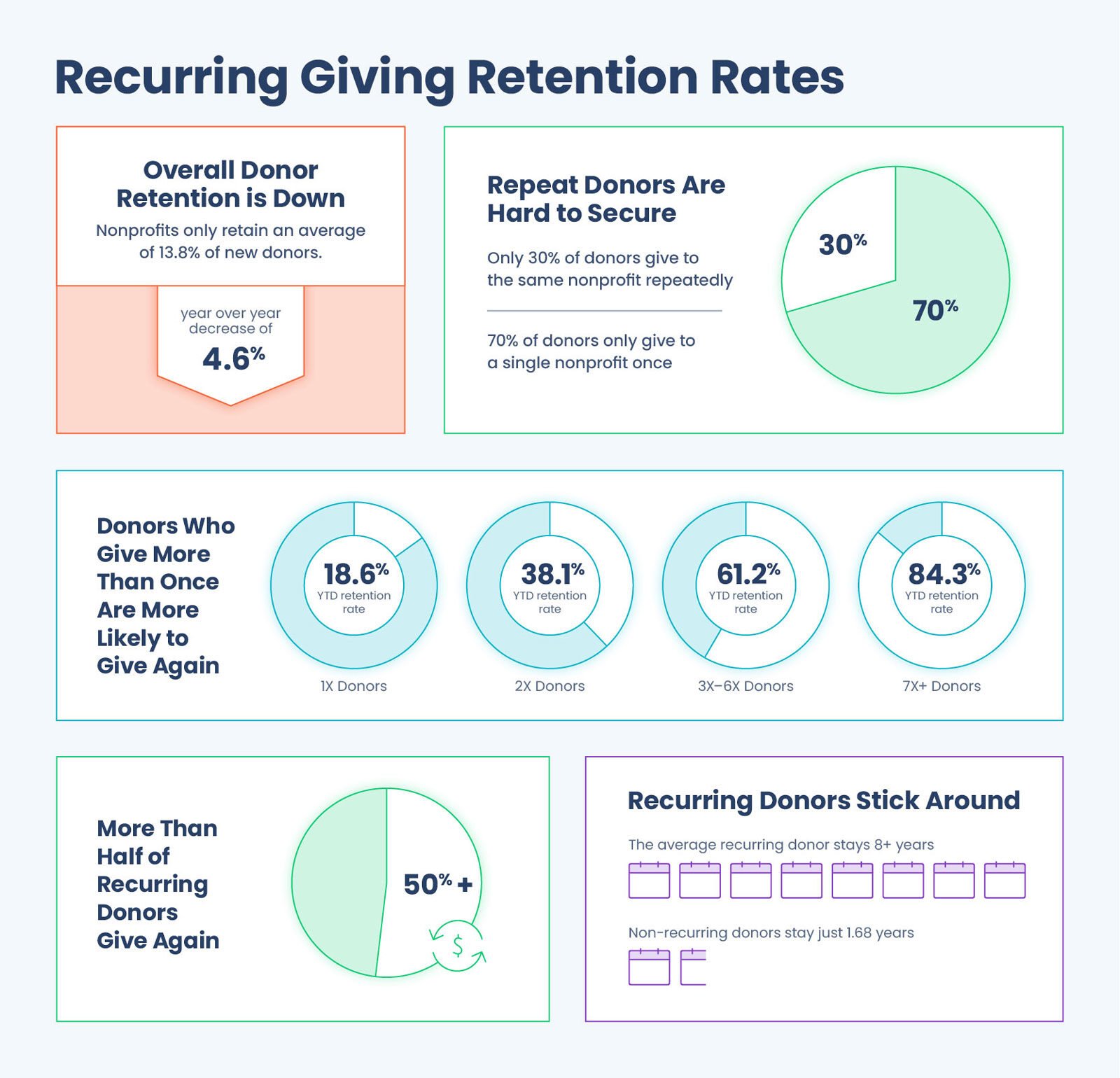%20(12).png)
Recurring Giving Frequency Trends
Now that we’ve established the popularity of recurring giving and the importance of a strong program to nonprofit stability, let’s take a look at the preferred frequencies for recurring gifts. Some of these numbers might surprise you!

- 94% of recurring donors prefer to give monthly, 3% like to give weekly, 2% like to give annually, and 1% like to give quarterly.
- 35% more recurring donations started on GivingTuesday in a year and led to more than $268K in recurring revenue for organizations on that day.
- And 57% more recurring donations started on New Year’s Eve in that same year, garnering more than $367K in new recurring revenue!
- Including both one-time and monthly donations, December giving accounted for 26% of all online revenue. Year-end giving campaigns are highly effective: the last week of December alone accounted for 13% of the year’s total online revenue.
The Takeaway: Recurring Donors Start Giving on Special Occasions and Prefer to Give Monthly
There are two significant takeaways from this data. First, monthly giving is the most popular, so that should be an option on your donation form.
Second, when there’s a natural seasonal spike in giving, it’s an opportune time to reach out to your donors to convert them to recurring givers.
Recurring Giving Retention Rate Trends
The first step is getting one-time donors or first-time donors to convert to monthly giving. But after that, you need to retain those donors! If monthly giving is a bucket, you want to be pouring in new donors at the top...and make sure no one is leaking out the bottom.
Here are some interesting statistics about retention rates:
- Overall donor retention is actually down. It’s decreased by 4.6% year over year, with nonprofits retaining an average of 13.8% of new donors yearly.
- Only about 30% give to the same nonprofit repeatedly. The other 70% only give to a single nonprofit once.
- But...donors who contribute more than once are more likely to give again!
- The one-time donor retention rate is 18.6% YTD
- The two-time donor retention rate is 38.1% YTD
- The three-to-six-time donor retention rate is 61.2% YTD
- The seven-plus donor retention rate is 84.3% YTD
- More than half of recurring donors give again.
- The average recurring donor sticks around for more than eight years, while non-recurring donors have a lifetime of only 1.68 years.

The Takeaway: Donors Who Stick Around Give More
The data clearly shows that once you have a recurring donor, steward them! The more you can retain donors, the stronger your program and your nonprofit will be.
The most successful and largest nonprofits prioritize donor stewardship and retention outreach. The critical importance of these loyal donors can’t be stressed enough!
Start Using Recurring Giving Statistics to Your Advantage
The data is clear: recurring giving is rising, monthly donations are preferred, and donor retention is essential to nonprofit sustainability. Understanding these trends allows nonprofits to refine their strategies, ensuring they attract new recurring donors and retain them for years to come.
However, while industry statistics offer valuable insights, they are just a starting point. Every nonprofit’s donor base is unique, and success comes from analyzing your data to see how your donors align with sector-wide trends. Are your supporters more likely to start recurring gifts on Giving Tuesday? Do your monthly donors stay engaged long-term? Are you losing revenue due to failed payments?
The only way to answer these questions—and adjust your strategy accordingly—is by having a robust nonprofit CRM in place. A powerful CRM helps you track donor behavior, identify key trends, and personalize outreach, making converting one-time donors into long-term supporters easier. By investing in the right technology, nonprofits can optimize their recurring giving programs and create a sustainable foundation for the future.
Start using data to your advantage and make recurring giving a core part of your fundraising success!
If you’re looking for additional resources to explore ways to promote recurring giving successfully, here are some top articles to check out:





-1.png)

.png)